Editor’s Note: This post was originally published on December 18, 2015, and has been updated for quality and relevancy.
Knife Reviews
HK Feint Fixed Blade Knife Benchmade Review
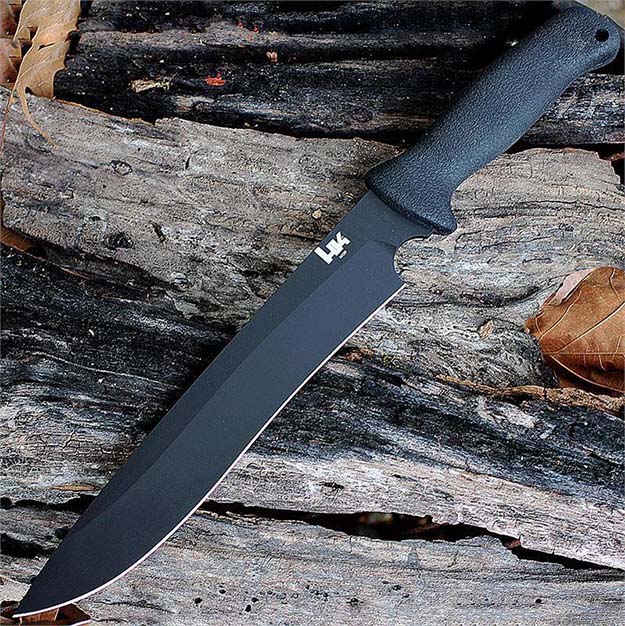
In previous articles, we discussed choosing a fixed blade survival knife:
A knife is one of the more important pieces of equipment you can have with you in a survival situation.
As such, a good, survival appropriate, fixed blade knife is your best choice for inclusion in a survival kit or BOB (Bug Out Bag) or equivalent, and/or to be strapped on when an emergency is likely. In this article, we will consider a contender for “Best Survival Knife”.
As mentioned in the general articles, there are two classes of fixed blade knife which can be appropriate for survival scenarios, the “bush” (medium) knife and the “field” (large) knife. This knife belongs to the field class.
Why did I consider the Benchmade HK Feint?
I've always been a fan of Benchmade pocket knives since their start in 1988 with the Bali-song (butterfly knife).
From that humble beginning, they have grown into one of the premier knife companies, and today, they make a couple of the best survival pocket knives I've found based on their Griptilian model. So I was happy they have some fixed blade models which look promising.
Of course, these knives tend to usually be out of my price range. Every so often a good deal pops up, and this time it was a Feint. This model is from their HK line.
That's right, HK, or Heckler & Koch, the famed firearm makers. Are these made for HK? I think not, since there is no mention of them on the HK website.
But these knives do use the HK logo, so presumably, Benchmade bought the rights or were commissioned to do so for marketing purposes.
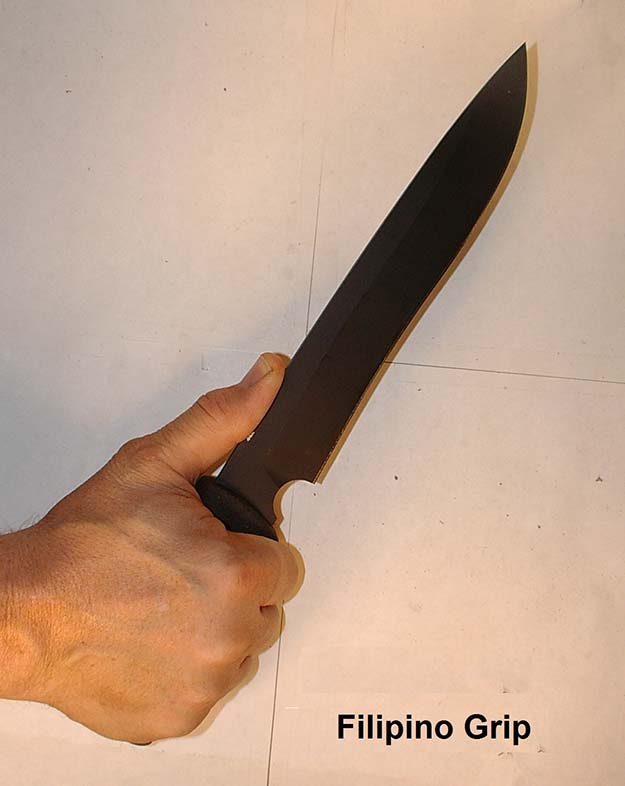
In addition to a lifetime warranty, typical of many quality knife companies, Benchmade offers the “LifeSharp” service, where they will resharpen your knife to factory razor sharpness any time you want.
Although only send a knife to Benchmade if you got it from an authorized dealer, as they can confiscate or destroy any knives determined to be “counterfeit”, without reimbursing you.
Although USA manufacture is not claimed on the knife or web site, Benchmade assures me these are made in their Oregon plant.
The specs
| Blade Length | 9.5″ | Overall Length | 14.5″ |
| Blade Width | 1 3/8″ | Weight (Knife Only) | 11.2 oz |
| Blade Steel | 440C | Grip Material | Santoprene |
| Blade Shape | Drop Point | Guard Type | Half, Molded into the grip |
| Blade Grind | Saber | False Edge | No |
| Blade Thickness | 3/16″ | Spine “Jimping” | No |
| Choil | Yes | Lanyard Hole | Yes |
| Made in | USA |
Special Features: Black blade coating
Initial impressions
This is the first opportunity I've had to review a field knife. There are more bush knife models available, and they tend to be easier to find (and less expensive). This one is a bit of a disappointment.
The knife seems fine, but the sheath is very basic for the price range; it may prove adequate, but is missing some features I've become accustomed to.
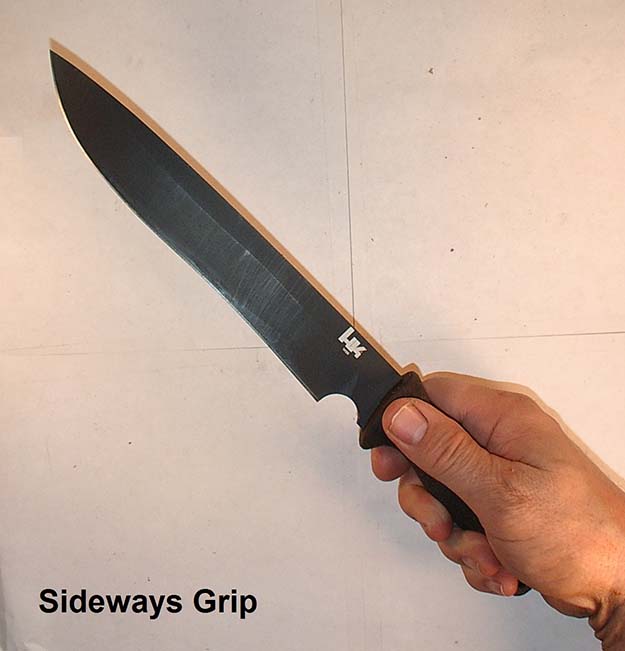
As I said, the knife is quite decent. The grip is comfortable, and very slip resistant with the hand dry, wet or oily. The balance is about 1 1/2″ in front of the guard, which takes a bit of getting used to, and makes the knife feel a bit clumsy.
But it should help with chopping, one of the key tasks for a field class knife. The grip is a tad short to be fully comfortable in the saber grip; people with smaller hands should not have even this minor discomfort.
It is comfortable and secure in all other grips; sideways is particularly nice with a bit of hook at the pommel to curl the little finger around. It does have the commonly found finger choil with the edge running right into it.
Usually I gripe about this, but in this case, I won't. First of all, you don't choke up on a field knife that often if you also have a field knife or good pocket knife.
And secondly, and more importantly, this choil is deeper than any I've seen before, which means there is a gap between your finger and the end of the edge.
It will still require some care to avoid cutting yourself when choking up, but rather less than with the other finger choils I've tried so far. There is no jimping, but with this grip material and design, that is not really necessary.
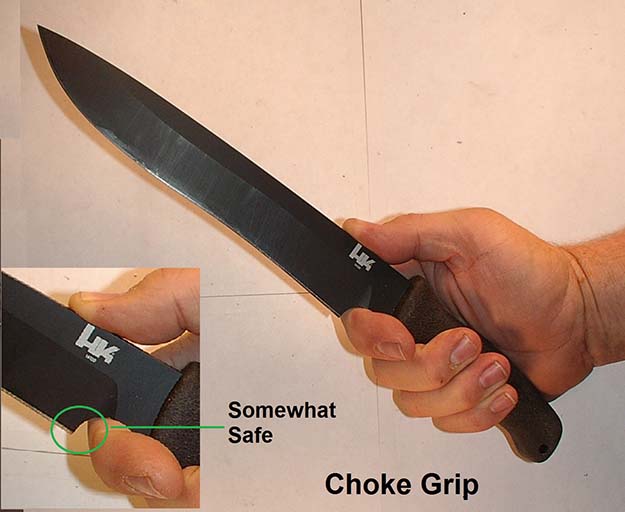
The edges of the spine are fairly sharp, but have a smooth coating, so it is questionable how useful it will be.
The lanyard hole is big enough to accept a length of paracord through it. The edges of the lanyard hole are not rounded, but they are through the soft Santoprene, so lanyard wear should not be a problem. .
The blade coating is smooth, so should not have any impact on cutting functions, and does not reflect light.
The sheath appears to provide adequate retention.
The knife appears like it could be a good choice for survival; the sheath may need modification or replacement.
The Steel
This is made of 440C, a high grade stainless steel which has been around for a while. It used to be a top choice for high end stainless knives, but has been eclipsed by ATS-34 and 154-CM. Still, it is a good choice, particularly for mid grade knives as it is easier to work with then those newer steels.
Having the highest amount of carbon in the 440 line, it is the least rust resistant, but that is still pretty good. It is tough and holds the edge well, but due to its larger, less uniform microstructure, does not exhibit the extra sharpness and chip resistance of the newer steels.
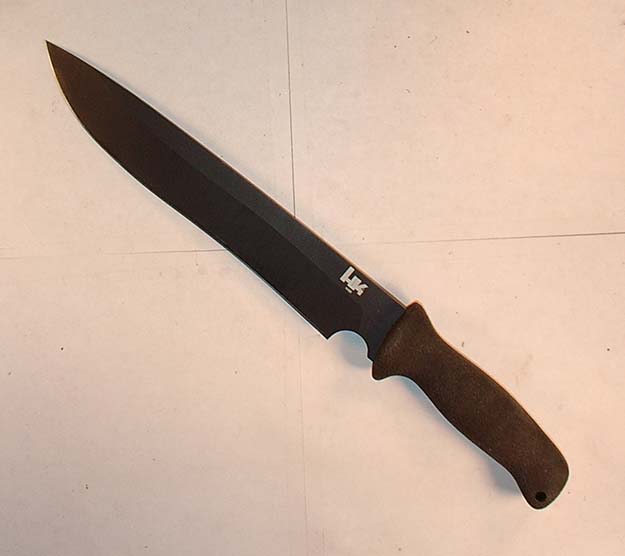
The knife came sharp enough to easily slice paper, which is usually adequate for a field knife. After 50 slices through cardboard, it did not lose any sharpness. My Pocket Pal did not improve the sharpness any but a few strokes of my old Brass Rat did improve the sharpness.
To summarize, it appears that the steel has good rust resistance, moderately high strength, good edge capability, fair or better ease of sharpening, moderate resistance to chipping and good edge holding capability.
Evaluation
General tasks
- Cutting cord – This is often necessary during construction of shelter, fishing, sewing and making snares and traps, as well as other times. Since this is not a major task for a field knife, I only tried the toughest I have on hand, 3/4″ Sisal. The knife had a little trouble getting through it, about average. I would say it passed this test.
- Making notches in branches – This could be required for shelter construction and making snares or traps, as well as other times. The knife was pretty good at this, both the main cuts and the stop cut, using the portion of the blade close to the grip for control. In this mode, the balance was not a distraction.
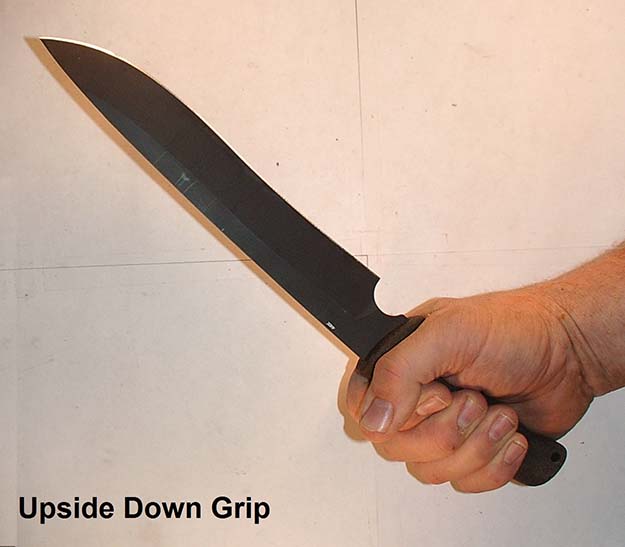
- Trimming/Sharpening/smoothing branches – This would be for shelter construction, as well as making arrows, spears, stakes, walking sticks and even bows. The knife did a good job of this.
- Pounding in stakes – This could be required for making shelters, snares and traps. This knife is not set up to perform this function.
Firemaking
- Use with a magnesium bar or ferrocerium rod is fairly viable using the edge of the spine; it shaves and sparks well. It does seem to mark up the edge of the spine used.
- Making a “featherstick” with this knife is a bit of a challenge. Soft woods work well, but with hard woods, it tends to go “too far”. Lots of curls, just not still attached to the feather stick.
- Drilling a hole (for a fire drill) was fairly easy, although the result was a smaller and less smooth hole than previous knives. The tip is a bit thin and is stainless steel, so try to avoid extreme stress on the tip.
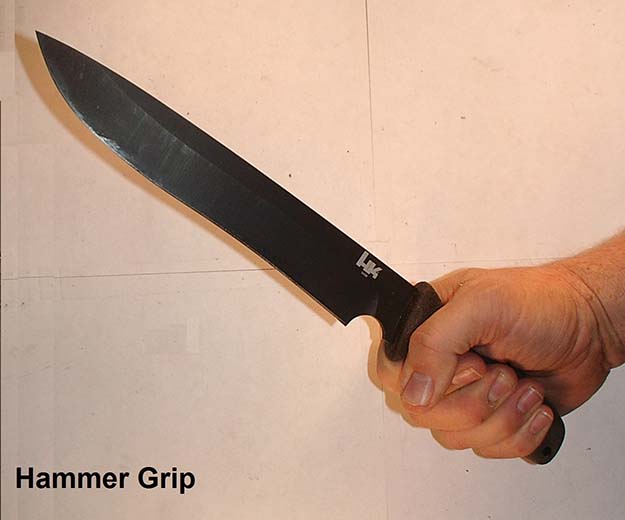
- Batoning for access to tinder or making kindling from logs worked very well. There were significant marks in the blade coating after this test; some scrubbing toned them down considerably, but there were still marks visible.
Food Gathering/Preparation
- Not really appropriate tasks for a field knife, so I didn't bother testing it. It is not balanced for these tasks, so in combination with the blade length may be inconvenient for these tasks. Still, the tip and blade shape may make it possible to use it for these purposes if necessary.
Chopping
- Sticks or fronds – For shelter and other construction, splints and firewood. This is the major task for a field knife, and this did fairly well. Not as well as one with a huge belly, but entirely adequate, while maintaining a “normal” blade shape.
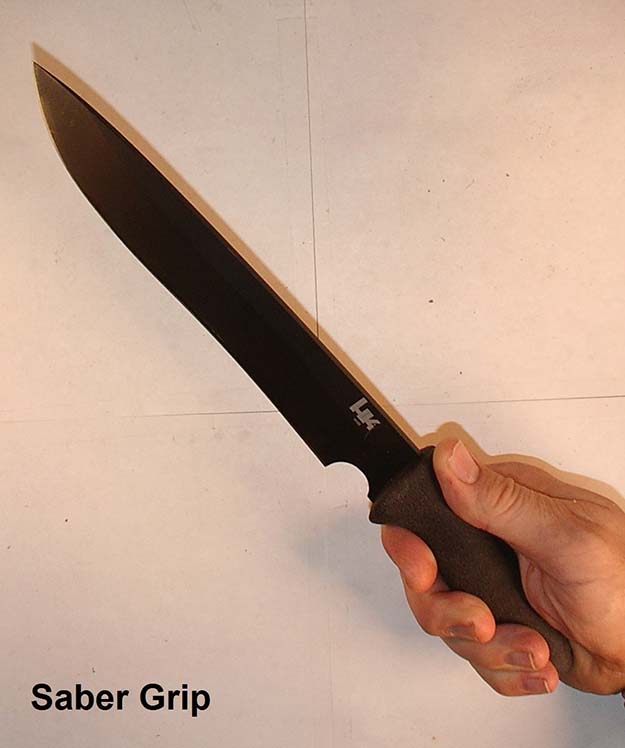
Defense
- The grip and point are fairly good for combat, and the blade length makes this a fearsome weapon to face. The balance makes it a bit clumsy to use, at least until you practice with it enough to get used to it, and it does lend power to chops and slices. It is not quite as agile as a shorter blade, but does have more reach. This could be an advantage defending against a dangerous animal, but may be an advantage or disadvantage defending against someone armed with a shorter, more agile, blade. There is, of course, little protection from your opponents blade, but it is better at preventing your hand from sliding onto your own blade than many knives of this design. I would say this knife could actually do moderately well as a survival level “combat” knife.
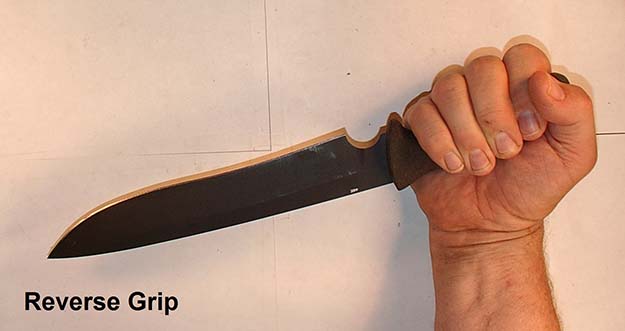
Sheath
The sheath, as mentioned, is quite basic; it will do the job and that is about all that can be said for it. It appears to be made of a stiffened nylon or similar cloth.
The belt loop is sewn in; not as stiff as I would like, but perhaps adequate. Retention is via a snap-closed grip strap, which works well. The liner seems to be thick enough and held in place well.
It is not fitted to the blade, so there is significant rattle, even with the grip strap fastened. It will fit in backwards for a left handed carry, but there is a “catch” when inserting it this way, which suggests that the blade may be rubbing on something, which might eventually impact the sheath or the blade edge.
The sheath is long, and the belt loop not the stiffest, so it seems that sheath flop may be a problem. But there is no hole or holes at the bottom for a leg tie and there are no other attachment options provided.
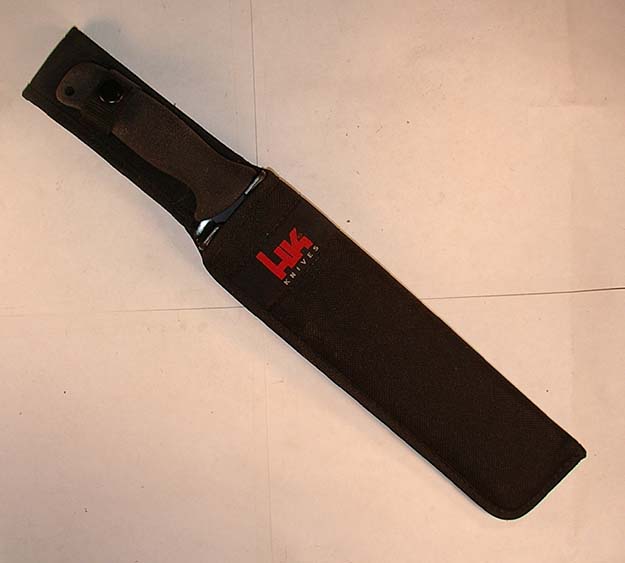
Accessories
There do not appear to be any accessories available, which is unfortunate, as a custom sheath seems to be desirable. Perhaps a custom sheath maker could be talked into making one. Or if you have the skills, make your own from Kydex or leather.
Price and Availability
The list price of the Feint at this point in time is $135.00. You can usually find them new on eBay for $95 and up.
It is listed as being in stock at the company, and there are a few people selling it on eBay. Amazon has a few of them left in the lower part of the eBay price range, and it is on the Prime program, but tax will be added.
Conclusions
I'm concerned about the brittleness of stainless steel used in a fine edged chopping tool like a field knife. I personally would prefer a good carbon steel unless I expected to be near salt water.
However, ignoring that bias and based on test results, this knife did fairly well at the primary task, chopping, and entirely adequately at everything else I asked of it.
There was no evidence of damage to the edge from the testing. Since the blade shape is standard, you might be able to use this for tasks requiring the tip, such as skinning, although it might be clumsier than you are used to when using a shorter blade.
It has utility for defense against animals and at least some humans. All in all, you might be able to get by with this as your only knife, but a bush knife or good pocket knife along with this would be far superior.
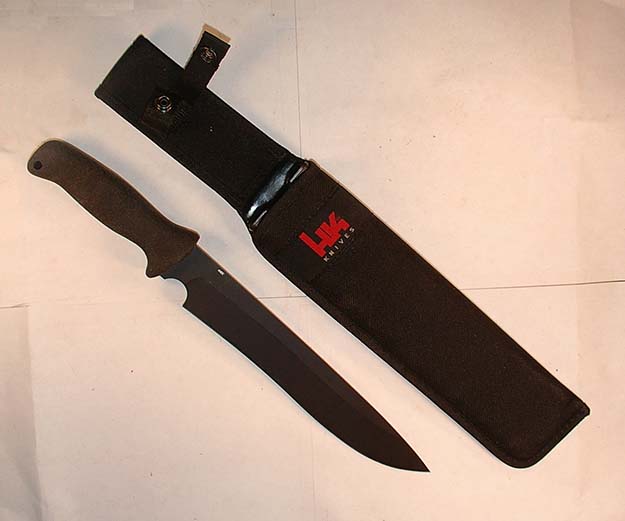
The sheath is a problem. It might be able to be modified to reduce the rattle and sheath flop, but if I was going to depend on this knife for survival, I would see about making a better sheath or having one made.
Although I don't think I'll make this one of my primary survival knives, I do plan to keep it; it fills a particular niche. The sheath fits perfectly in the “ruler” pocket on the leg of my overalls, so this goes in there when I go out into the alley to take the garbage out at night.
We live at the edge of town, and there is significant wild and semi-wild life in the area; this saves me having to dig out a belt in order to have something better than a pocket knife on me.
UP NEXT:
Follow us on Facebook, Instagram, and Pinterest!
Disclaimer: All content on this site is for informational purposes only. Please read our full disclaimer here.
-

 Paracord Projects1 year ago
Paracord Projects1 year agoParacord Projects | 36 Cool Paracord Ideas For Your Paracord Survival Projects
-

 Paracord Projects1 year ago
Paracord Projects1 year agoHow To Make Paracord Survival Bracelets | DIY Survival Prepping
-

 Medical Care1 year ago
Medical Care1 year ago21 Home Remedies For Toothache Pain Relief
-

 Knife Laws1 year ago
Knife Laws1 year agoAre Switchblades Legal? Knife Laws By State
-

 Do It Yourself1 year ago
Do It Yourself1 year agoSurvival DIY: How To Melt Aluminum Cans For Casting


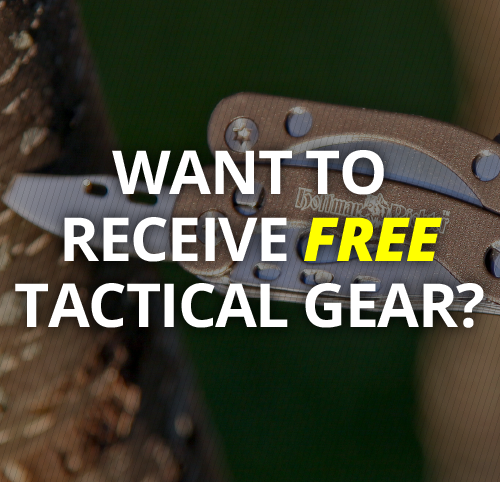



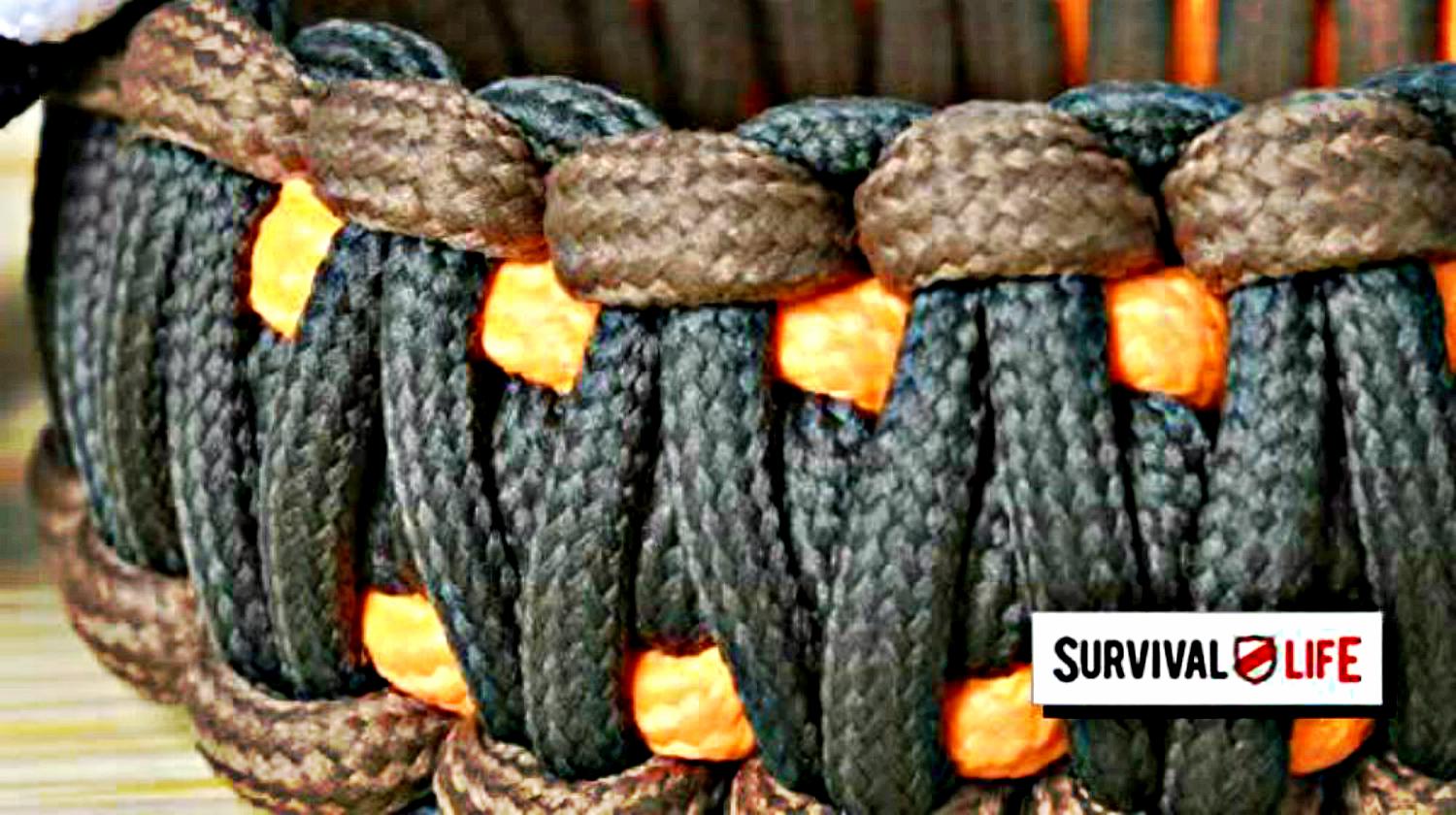




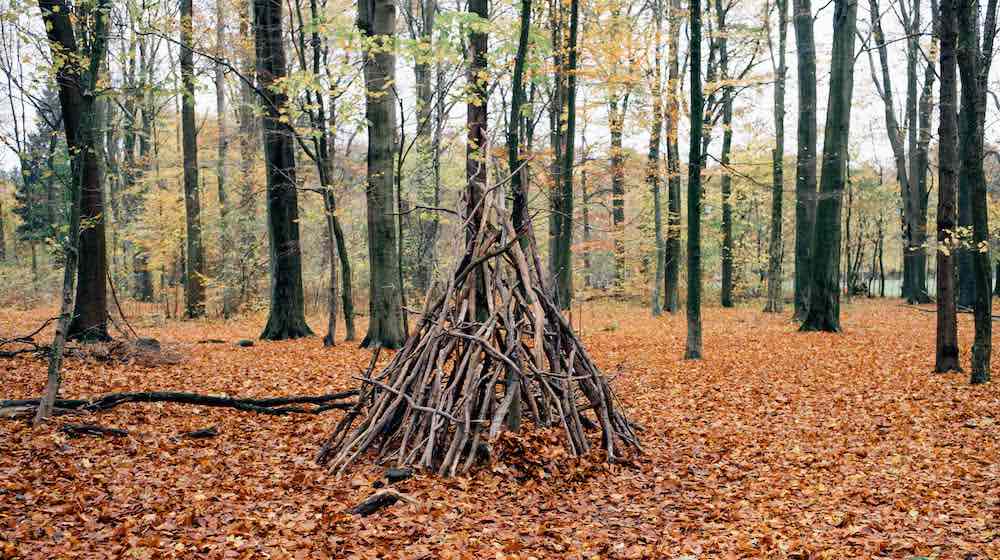


Pingback: 7 Fixed Blade Knives That Will Never Fail You In A Survival Situation | Survival Life
Pingback: Camillus CK-9 Fixed Blade Knife Review | Survival Life | Blog
Pingback: Cold Steel Master Hunter Review | Survival Life | Blog
Pingback: Buck/Hood Punk Fixed Blade Survival Knife Review | Survival Life
Pingback: Choosing A Fixed Blade Survival Knife (Part 1)
Pingback: Choosing A Fixed Blade Survival Knife (Part 1) | survivalisthandbook.com
Pingback: Choosing A Fixed Blade Survival Knife (Part 1) – survivalgear
Pingback: Choosing A Fixed Blade Survival Knife (Part 1) | Survival Life
Pingback: HK Feint Fixed Blade Knife Benchmade Review – BestSurvivalSkills.com